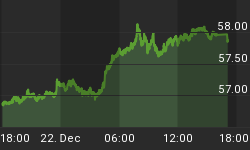Japan Sells 1.9 Trillion Yen of 1.6% 10-Year Bonds --(Bloomberg, September 2, 2004.)
Editor: The US sells 10-Year bonds to Japan at 4.11 per cent. This difference of 2.51 per cent in interest rates provides Japan with arbitrage profits.
On June 30, 2004 we asked this important question: 'What yield would a 10-year fixed rate Treasury bond need to provide an individual investor in order to justify a purchase held to maturity?'
Because risk over time cannot be quantified, readers realized that this was a very hard question to answer. Correspondence I received mentioned that 10-Year Treasury yields ranging from seven to 15 per cent, held to maturity, would be attractive to the individual investor. The Treasury does not pay the average individual US investor enough yield to justify holding a 10-Year treasury bond to maturity. The bid price is way below the ask.
Why then would the 10-Year Treasury yield far less than the risk-adjusted expectation? The answer, of course, is Japan. The bid and ask prices have been set across the Pacific Ocean between borrower government and creditor government - between the United States and Japan.
To the Japanese government, any rate received from US Treasuries, 10-Year or otherwise, will be much higher than the interest rates set for borrowing money from its domestic savers. Money can be borrowed on the cheap from domestic Japanese savings deposits.
The deposited savings (banking liability) can be used to purchase US Treasury bonds (banking asset). The difference between interest earned and interest paid is profit. Japan makes a profit on every dollar purchased via US Treasury bonds.
Unfortunately, Japanese savers are not getting enough yield to justify the risk of default. Perhaps for this reason, I have not seen it acknowledged elsewhere that a profitable interest rate differential, or arbitrage, exists between Japanese savings and US borrowings.
For this scam to continue to work, the Bank of Japan must keep domestic savings rates low and the yen weak. I believe that without Japan, the 10-Year would be yielding between seven and 15 per cent. Long ago, individual US investors collectively had enough savings to purchase domestic treasury instruments at a fair rate of return. Priced domestically, the US 10-Year rate should not be anywhere near its current level of 4.11 per cent.
The reward-to-risk ratio has been mis-priced to risk. It has been priced instead to the deflationary context of Japan. In effect, the US has been importing Japanese deflation. The US has been living high on the Japanese savings hog. It has been enjoying the deflation of cheap money much in the same way the country enjoys the deflation from cheap goods from China.
Some specifics: the government-run postal savings system of Japan manages about three trillion dollars' worth of savings. Some unknown percentage of those deposits (banking liabilities) eventually find their way into US Treasury instruments (banking assets) to provide Japan with a return on investment.

The US runs such large deficits that it needs buyers for its Treasuries willing to accept a rate of return that does not compensate for risk. If the 10-Year Treasury rate were set between seven and fifteen per cent, the US would suffer an immediate fit of bankruptcy. The side effects of folly lurk in the background.
Up to now, Japan comes ready made to accept unlimited amounts of US debt. In turn the purchase of US Treasuries by Japan establishes and buttresses demand for US dollars and weakens the yen.
US dollar purchasing power relies almost entirely on the difference between interest rates in Japan and the higher rates in the United States.
Let's recap: Japanese savings are invested in banks; banks purchase Japanese Treasuries; the Bank of Japan buys US Treasuries yielding a relatively high rate of interest and thereby making a profit.

It is an intentionally contrived relationship that skims value from savings and encourages unproductive debt and investment. It puts Japanese savings at risk for the benefit of the US government, the US consumer, the Japanese worker, and politicians everywhere. Everyone gets a piece of the action. Risk is ignored so the United States has access to imported savings at below market cost.
Not one but two major deflationary forces are at work in the world today. These forces are labor deflation from China and (as mentioned above) imported monetary (interest rate) deflation from Japan. The side effects are showing because these deflationary forces are stripping jobs away from the United States and compressing global economic activity and interest rates. The global economy has become more and more 'finance' centric as a result.
In summary, interest rate differentials:
(1) allow the United States to tap Japanese savings;
(2) provide the Japanese treasury and banking system with the opportunity to make arbitrage profits;
(3 )weaken the Japanese yen, which in turn provides the domestic Japanese economy with jobs;
(4) establish Japan as the only buyer capable of absorbing US debt;
(5) put an artificially low cap on US long-term interest rates, thereby enabling the US to borrow obscene amounts of money and service its debt;
(6) enable finance-based US economic activity, including artificially low long-term rates, to be used to facilitate mortgage lending;
(7) make the United States an importer of Japanese monetary (interest rate) deflation, and;
(8) support the US dollar.
Can this monetary (interest rate) price-fixing and skimming relationship remain in place indefinitely?
I don't think it can, because risk will surface over time - the same risk that has not been priced into US debt. Governments cannot manage the bids and asks of free markets without causing systemic distortions that eventually break (see communism).
But in the meantime, I believe the JPY/USD relationship and carry trade can provide clues as to the global financial outcome.
















